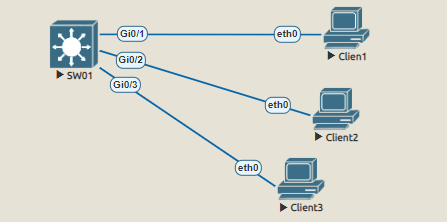Introduction
DHCP (Dynamic Host Configuration Protocol) is a network protocol used to automatically assign IP addresses and other network configuration settings to devices on a network. In a typical DHCP configuration, there are two main components: A DHCP server and DHCP clients. The DHCP server is responsible for assigning IP addresses and network configuration settings to clients, while the clients are responsible for requesting and receiving those settings from the DHCP server. DHCP allows network administrators to manage IP address allocation and network configuration centrally, which can simplify network administration and reduce the chance of conflicts between devices on the network. It also supports dynamic allocation of IP addresses, which means that IP addresses are only assigned to devices when they are needed, and can be released when they are no longer in use, which helps to conserve IP address space. The DHCP Process, also known as "DORA", is explained in the table below:
Overview
A DHCP server is a network service that automatically assigns IP addresses and network configuration settings to devices on a network. A Cisco router or layer 3 switch can function as a DHCP server, allowing it to provide IP addresses and network configuration information to devices connected to the network. To configure a Cisco router as a DHCP server, the following steps are necessary:


0 Comments